Arrowhead RV Park just received a major Wi-Fi upgrade.
For the longest time we have been doing battle with the wifi gremlins, putting bandage upon bandage but no more!
We have successfully installed one of the most advanced wi-fi systems in Logan, to date.
it is Fully Managed with multiple Access Points mounted around the property.
Signal strength is excellent, complete coverage everywhere on property. The Access Points hand off from one to another seamlessly and unnoticed, it is a complete Meshed system.
When we were first considering the upgrade we contacted a service provider and told them what we wanted in a system.
They came back with a figure that would fund a very nice weekend in Vegas. On top of the steep price we would not own the equipment and we would have to pay a monthly fee for each access point, on top of the standard service fee. The service provider would remotely manage the system for us, we would not have access or control. Installation and operational expenses were prohibitive.
Option 2: DIY
I started doing research on the internet, reading forums, watching videos, talked to a few people in the business. I needed a commercial grade system not the discount “Router in a Box” that you get from targe-mart
I evaluated my current and future needs. With a 35 space RV Park, figuring 2.5 devices per site my maximum guest usage would be around 87.5 devices at capacity. On top of guest usage I have planned a surveillance system to run in unison with the wifi equipment. I needed a system that was not only fast but “wide” as well. It needed to handle a lot of traffic and keep things flowing smoothly.
It had to be fully manageable in house without a steep learning curve and it had to be cost effective. I decided on a Ubiquiti Unifi system. All of their components are designed to work together, they have a good reputation with solid tech support.
Now to determine locations for the Access Points I turned to available utility poles, two required Edison receptacles. I found three that would be acceptable. Using line of sight, I would mount each Access Point at a level that was just over the highest RV and within sight of the other AP’s.
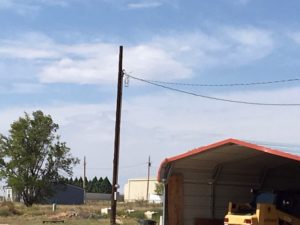
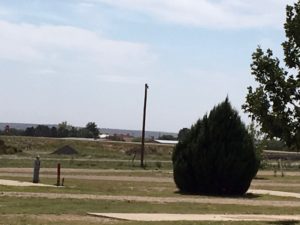
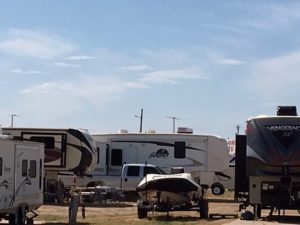
Pictures are North – South – West
Then run a Cat6 cable between the first AP and the Switch – about 200′ of cable point to point.
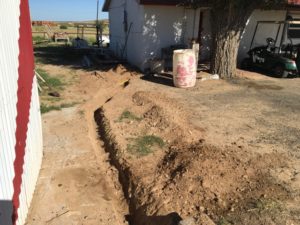



The three AP’s would be mounted creating a large Mesh over the RV sites.
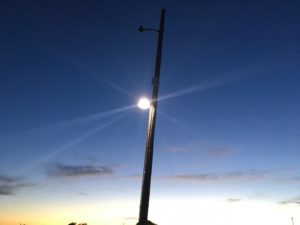

Figuring that any new AP’s I incorporated could run via a PoE injector I decided on an 8 port 60 watt Managed Switch headed by a USG Gateway. With all the components of the system now gathered together I was ready to begin the programming process.
Using the cable, connectors and strain relievers I made up connector cables and patched all pieces of the system together. Having downloaded the operating software from the Ubiquiti website, I began to energize the system. One thing I can tell you about the programming process is patience! Good things take time. I performed the firmware updates and named each piece so it would be easier to find in the device menu.
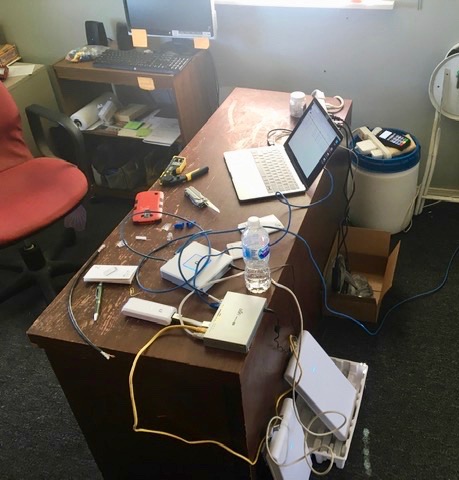
Since the moment the system became operational I have not heard one comment on the wifi. Why? Because like the electricity or water it is expected to be functioning and available without question, and it is. I suspect the only remark I am likely to hear over the next couple of years is, “What’s the new password?”

Oh ya, here is the best part. We own the equipment. We manage the system in house and we are not paying any additional monthly fees per system component. Now that I understand wireless Access Points, the thought of having to pay a monthly fee on each seams ludicrous, like having to pay a monthly fee per tire on your car?!
I will be mounting the AP’s permanently in place, directly to the utility poles using simple lag bolts this week.
Here is a list of parts and equipment that I used on this wifi system. If you have a large area with a lot of traffic this might be a starting point.
- Ubiquiti USG
- Unifi Switch 8, 60 watt
- UAP-AC-M-PRO Access Point
- Cloud Key
- Network Cable Strain Relief
- ITBEBE RJ45 Pass Thru Connectors
- Klein Tools – All in one network cable tool
- Cat6 Cable – Direct Burial
VLR picture courtesy of National Radio Astronomy Observatory.
I have monetized this article through amazon.com
Just for grins – The original equipment for the Park was a Linksys E1200 sitting behind a bookshelf in the front office, it had a 2.4ghz extender plugged into it. The extender was out the front door, hung on a pole – still there………
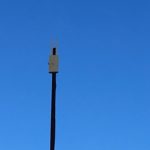
Update – Nov. 15
Everything worked fine once the system was initially installed but after a few days the disconnect phenomena began.
What I have done to remedy the situation was balance the I/O strength of each A.P. This seems to have worked as we have not experienced any other drop outs since the adjustment. The settings are available in the ubiquity controller, go to the individual AP, to config, to pwr. A balanced system is a happy system.
